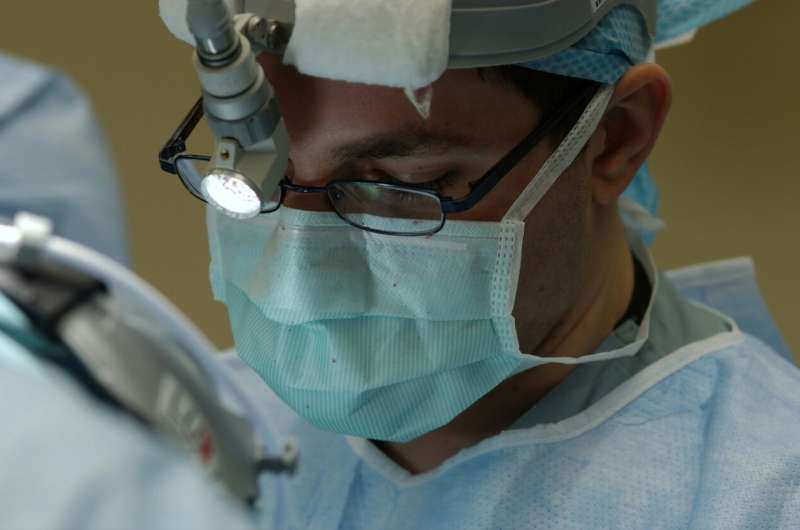This article has been reviewed according to Science X's editorial process and policies. Editors have highlighted the following attributes while ensuring the content's credibility:
fact-checked
peer-reviewed publication
trusted source
proofread
Investigating methods for preventing pancreatitis after endoscopy

Anti-inflammatory drugs alone are not sufficient to prevent inflammation of the pancreas following a common endoscopic procedure, according to a study recently published in The Lancet.
Endoscopic retrograde cholangiopancreatography, or ERCP, is a procedure commonly used to diagnose and treat problems in the liver, gallbladder, bile ducts and pancreas. The technique combines X-ray and the use of an endoscope, which is a long, flexible, tube with a light attached.
Although ERCP is a safe and effective procedure, it can sometimes cause inflammation in the pancreas, also called pancreatitis. To prevent pancreatitis, doctors often surgically place a stent in the pancreas, which can be costly and lead to further complications, said Rajesh Keswani, MD, associate professor of Medicine in the Division of Gastroenterology and Hepatology and a co-author of the study.
"ERCP is a very important component of how we manage patients with diseases of the pancreas and bile duct," Keswani said. "The biggest challenge for this procedure is pancreas inflammation. That's because the bile duct and pancreas are very small openings in the small intestine. When you work in that area with an endoscope as with ERCP, there can be swelling, and this can cause this pancreas organ to get very inflamed, which can be a life-threatening issue."
In the study, more than 1,900 patients who had undergone ERCP were randomly assigned to receive either a regimen of indomethacin, a drug often used to relieve inflammation, or indomethacin along with a pancreas stent.
Among the 975 patients who received indomethacin alone, more than 14% experienced pancreatitis. Of those who received the drug alongside a pancreas stent, 11% experienced pancreatitis.
The findings show that indomethacin alone is not effective in preventing pancreatitis, Keswani said.
"In the analysis of the study, it shows that using the pancreas stent in addition to the medicine reduces pancreatitis risk across a wide spectrum of patient risk factors," Keswani said.
The results also highlight the importance of ensuring gastroenterologists have the skillset to place stents, Keswani said, as the procedure is complex, can be high-risk and requires advanced training.
"If you're performing these procedures, you really need to be proficient in placement of these pancreas stents," Keswani said. "People who perform these procedures at low volumes may not feel so comfortable. So, this really makes it incumbent upon all of us to make sure that everyone has the technical skill to perform this procedure or consolidate the procedures to people who feel comfortable performing them."
Moving forward, Keswani said he hopes to focus on increasing access to rigorous training for physicians who place pancreas stents.
"The data is clear. Now our question is: 'How do we make sure that every patient who gets an ERCP gets the highest quality procedure?'" he said.
More information: B Joseph Elmunzer et al, Indomethacin with or without prophylactic pancreatic stent placement to prevent pancreatitis after ERCP: a randomised non-inferiority trial, The Lancet (2024). DOI: 10.1016/S0140-6736(23)02356-5




















